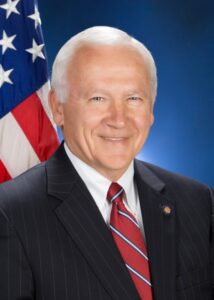Consultant sees opportunity for regionalization of Williamsport Bureau of Fire
A hired consulting firm from Philadelphia advising the City of Williamsport sees opportunity for the Bureau of Fire to regionalize as it reviewed the department’s call volumes from 2020.
An analysis of the department’s calls by Public Financial Management (PFM), which is assisting the city on its five-year strategic management plan through a grant, revealed that a majority, or 75%, of the calls for the department are related to providing emergency medical service (EMS). The bureau provides fire suppression, rescue and emergency medical service, said Bob McDermott, director, PFM, who looked at a department budget that has grown consistently at an average of 2.2% a year dating back to 2020.
A pie chart was provided to the council to see how it sliced up in terms of call volume for the department which had a budget in 2025 listed at $7.89 million.
The number of structure fires mirrored the rate for other fire departments across the state and were the lowest among the call volume, according to the report.
A significant number of calls are EMS-related, with a call volume of 52%, followed by false alarms accounting for 15%, and motor vehicle accidents, 8%, with fire officials also responding to public service calls, which can include anything from dangerous situations, to a cat in a tree or a hydrant leaking. Fires and responses to them — in structures and elsewhere — accounted for 4 % of the overall call volume, McDermott said.
EMS calls, meanwhile, were growing 8.5 %, on average; public service calls’ at 7.7% and fire related calls grew at 7.7%. Overall, the calls for the department have grown 3.3% each year, according to the report. The peak call volume is 9 a.m. to 9 p.m. Monday through Friday, he said.
With 75% of the calls in the department EMS, false alarms and motor vehicle accidents, the fire department, based on its type of calls, is primarily a quick response department – that responds to structure fires and fire suppression.
“What could be done differently?” asked Gordon Mann, managing director, PFM, with the company having visited with department heads and key members of each department staff.
“Unquestionably, the department gets staff to respond to structure fires,” he said. But the call volume indicates a majority of time filling the gap in the EMS system, which is “struggling like it is elsewhere in terms of getting people on site,” he said.
That led to a question from Councilwoman Liz Miele, chair of the city finance committee, who asked Mann if the data on call volume mirrored what was occurring with fire departments in similar cities across the state.
“Fire is always the lowest,” Mann said. The motor vehicle accident responses also were on par with what the company had seen. The false alarms at 15% were considered to be a bit on the high end. He then suggested the city could consider issuing a false alarm fee, one that might be done on a sliding scale or some other means of reducing false alarms.





